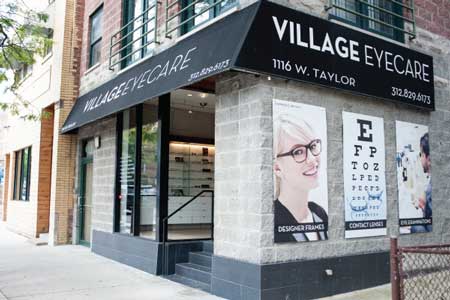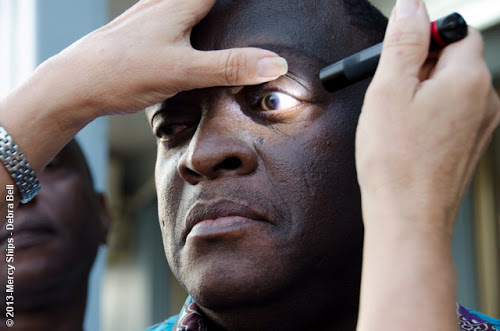Discover the most effective Eye Center Andalusia: Advanced Vision Solutions
Discover the most effective Eye Center Andalusia: Advanced Vision Solutions
Blog Article
Recognizing the Different Vision Correction Procedures Available for Clearer View
In the realm of vision correction treatments, a wide variety of choices exist to resolve refractive errors and provide people with clearer view. From the commonly recognized LASIK surgical procedure to less intrusive procedures like PRK and implantable lenses, the area of ophthalmology provides a variety of methods tailored to fit different requirements and preferences. Each treatment comes with its very own collection of considerations, advantages, and prospective threats. Comprehending the subtleties of these vision adjustment approaches is important for making educated decisions concerning one's visual wellness. Let's check out the details of these procedures and lost light on the path to accomplishing boosted vision clarity.
LASIK Surgery
LASIK surgical treatment is an usual refractive treatment used to fix vision issues such as farsightedness, astigmatism, and nearsightedness. This medical strategy, which represents Laser-Assisted sitting Keratomileusis, intends to improve the cornea to boost how light is concentrated on the retina, ultimately enhancing vision clearness. During the procedure, a thin flap is created on the cornea, and a laser is used to remove accurate amounts of tissue to reshape it appropriately. This improving permits for light to be properly concentrated onto the retina, dealing with refractive mistakes.
One of the primary advantages of LASIK surgery is the quick improvement in vision experienced by people. In general, LASIK surgical procedure is a prominent selection for individuals looking for a long-term option for their vision troubles.
PRK Procedure

PRK is an appropriate choice for individuals with slim corneas or those at a greater risk of eye injuries, as it does not involve developing a corneal flap. The healing procedure for PRK is a little longer contrasted to LASIK, as the epithelium requires time to restore. People might experience discomfort and blurry vision for a few days following the procedure.
Despite the longer recovery time, PRK can yield outstanding results in vision enhancement, making it a useful option for those who may not be suitable candidates for LASIK surgery. - Andalusia Pediatrics
Implantable Lenses
Unlike PRK where the cornea is reshaped directly, implantable lenses offer another method for dealing with vision by putting fabricated lenses inside the eye. This treatment is especially helpful for people with high degrees of farsightedness, astigmatism, or nearsightedness who may not appropriate prospects for laser surgical treatments like LASIK or PRK.
Implantable lenses, also recognized as phakic intraocular lenses, job by supplementing the eye's natural lens with an artificial one. These lenses can be positioned in front of the natural lens (anterior chamber) or behind the iris and in front of the all-natural lens (posterior chamber) By changing the power and positioning of these lenses, eye doctors can properly remedy refractive errors and boost visual skill.
One benefit of implantable lenses is that they this website are removable and exchangeable, offering adaptability for future modifications. As with any type of medical procedure, there are threats included, such as infection or cataract development. Clients considering implantable lenses must consult with an eye treatment specialist to figure out one of the most appropriate alternative based on their private needs and eye health and wellness.
Corneal Rings

The treatment for putting corneal rings is minimally intrusive and reasonably fast, usually performed as an outpatient treatment. Throughout the surgery, the eye doctor makes a tiny laceration in the cornea and inserts the rings at a details deepness. As soon as in position, the rings aid to improve the cornea, supplying a smoother surface for light to enter the eye, which can result in clearer vision.
Corneal rings are considered a reversible treatment, as they can be gotten rid of or changed if essential. While they might not totally get rid of the requirement for glasses or get in touch with lenses, corneal rings can substantially enhance vision top quality and overall aesthetic convenience for individuals with keratoconus or various other corneal irregularities.
Refractive Lens Exchange
Following the improvement of corneal abnormalities with procedures like corneal rings, another vision adjustment technique that can attend to refractive errors is Refractive Lens Exchange (RLE) RLE is an operation that involves replacing the eye's all-natural lens with a synthetic intraocular lens (IOL) to remedy refractive mistakes such as farsightedness, presbyopia, and nearsightedness. This treatment is specifically valuable for people who may not appropriate candidates for procedures like LASIK or PRK due to aspects such as thin corneas or high refractive mistakes.
RLE belongs to cataract surgical procedure, as both include removing the eye's natural lens; nonetheless, in RLE, the lens is clear, not gloomy as in cataracts. The artificial lens implanted throughout RLE can be personalized to address the person's particular blog here refractive mistake, offering clear vision at numerous distances. Healing time for RLE is reasonably quick, and individuals can anticipate improved vision not long after the treatment. As with any type of operation, prospective threats and complications exist, so a detailed assessment with an eye treatment specialist is vital to establish if RLE is the right vision adjustment alternative.
Verdict

In the world of vision modification procedures, a plethora of choices exist to address refractive mistakes and offer people with clearer view.LASIK surgical treatment is a common refractive treatment used to deal with vision issues such as farsightedness, nearsightedness, and astigmatism.While also a typical refractive treatment, the PRK (Photorefractive Keratectomy) method varies from LASIK surgery in its technique to correcting vision issues.Following the adjustment of corneal abnormalities with procedures like corneal rings, one more vision improvement technique that can attend to refractive mistakes is Refractive Lens Exchange (RLE) LASIK surgery, PRK treatment, implantable lenses, corneal rings, and refractive lens exchange are all alternatives that can deal with various vision concerns.
Report this page